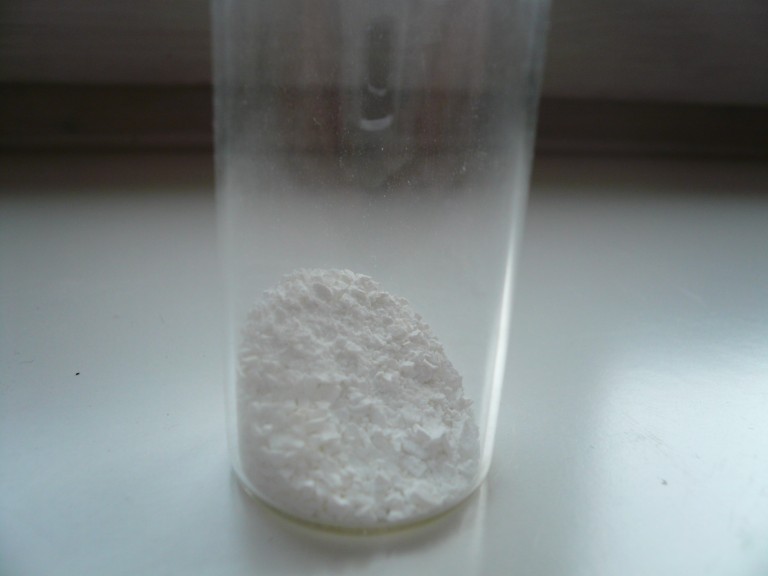WET METHOD
Materials: lead monoxide (litharge) PbO, 33 grams = 0.15
F.W.
lead dioxide PbO2, 24 grams = 0.1 F.W.
6N NaOH.
Apparatus: 600-cc. beaker.
5-inch funnel.
150-cc. casserole,
iron ring and ring stand.
Bunsen burner.
Procedure: It is rather difficult to adjust the temperature successfully for the dry method. Place 33 grams litharge, 24 grams of lead dioxide and 50
cc. of 6 N NaOH in a 600-cc. beaker. Stir thoroughly and leave in a warm place (80°), striring when convenient and adding water whenever the mass
becomes dry, until the contents have become bright red. Finally wash the red lead thoroughly by decantation, and rinse on to a gravity filter in a
5-inch funnel. Let it drain over night. Lift the filter intact from the funnel, open it out on paper towels, and leave it on the hot plate until it is
entirely dry. Detach the red lead from the paper by bending the paper; transfer the dry material to a 150-cc. casserole and heat it in a flame about 2
inches high, holding the casserole in the hand and rotating it in the flame. At the correct temperature (350-400°) the material becomes a dark
reddish brown; after cooling it is a much more brilliant red than before heating. Great care must be taken to keep the material stirred during the
heating so that the under layers do not become superheated and changed to PbO. Preserve the preparation in a 2-ounce corkstoppered bottle.
|


 Maybe if you blow a fast stream of air at it from a pump or something that wold speed
it up for you?
Maybe if you blow a fast stream of air at it from a pump or something that wold speed
it up for you?





 It's lead for god's sake, it will oxidise easily enough
It's lead for god's sake, it will oxidise easily enough









 Now you can destroy your kidneys even easier :rolleyes:
Now you can destroy your kidneys even easier :rolleyes:















